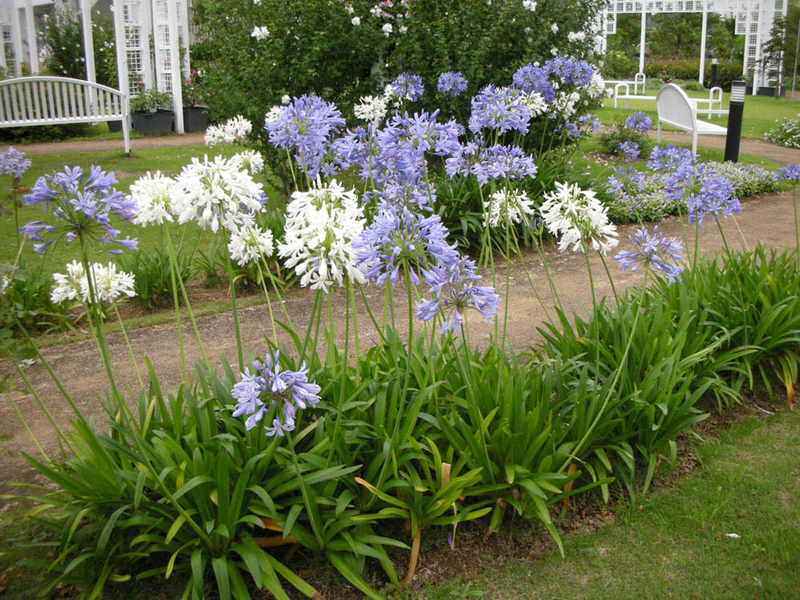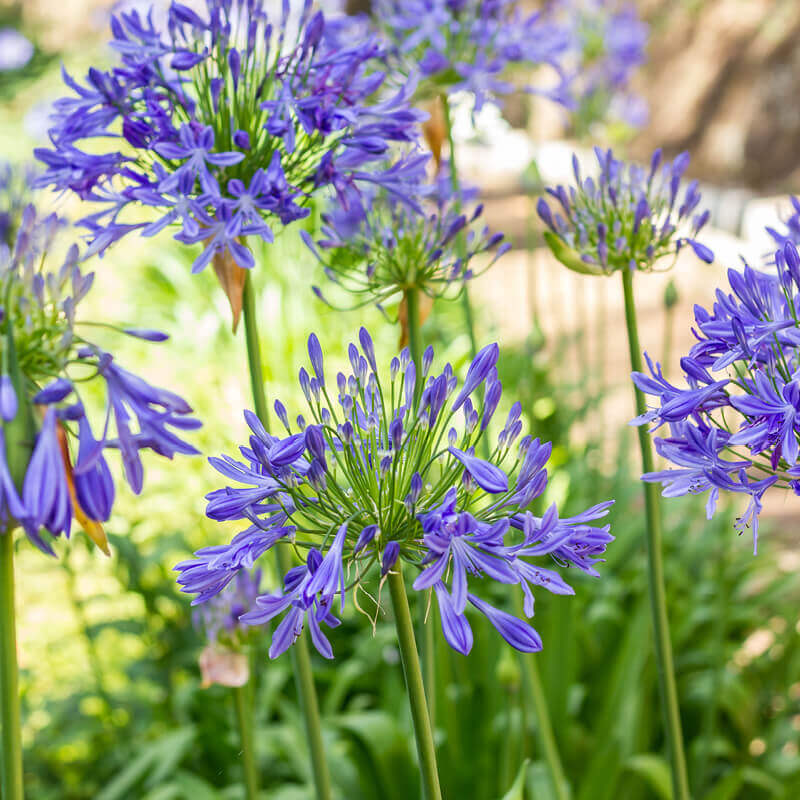Letting Loose the Secret to Effective Agapanthus Farming: Advice for a Flourishing Yard
In the world of horticulture, growing agapanthus efficiently calls for a calculated approach that includes various elements of plant treatment. With cautious attention to detail, one can open the secrets to supporting these magnificent flowers, causing a garden that prospers with beauty and vibrancy. By comprehending the nuances of agapanthus growing, one can develop an environment where these plants prosper and bloom perfectly. In the complying with conversation, we will explore essential tips and methods that will certainly direct you in the direction of a thriving agapanthus yard, using understandings into finest methods, dirt problems, watering techniques, and extra.
Growing Agapanthus: Finest Practices
When growing Agapanthus, appropriate dirt prep work is vital for making certain successful development and growth of these gorgeous flowers. Agapanthus, typically called Lily of the Nile or African lily, prospers in well-draining dirt with a somewhat acidic to neutral pH level - Agapanthus. Prior to growing, it is vital to amend heavy clay soils with natural matter such as garden compost or peat moss to boost water drainage and give necessary nutrients for the plants
To grow Agapanthus, pick a location that receives full sunshine to partial color, as this will promote healthy and balanced growth and bountiful flowering. Dig an opening twice the diameter of the plant's origin round and put the Agapanthus at the very same deepness it was previously expanding. Gently backfill the hole with dirt, pushing down securely to eliminate any air pockets around the roots.
Water the newly planted Agapanthus extensively and remain to keep the soil uniformly damp, specifically throughout the plant's active growing season. Agapanthus. Using a well balanced plant food once a month can better support the plant's development and flowering. By complying with these ideal techniques for planting Agapanthus, you can develop a spectacular screen of these captivating flowers in your yard
Perfect Dirt Issues for Agapanthus
For ideal growth and blooming success of Agapanthus plants, guaranteeing the dirt conditions are optimal is important. Agapanthus chooses soil that is abundant in nutrients, so incorporating a balanced fertilizer during the growing season can advertise healthy development and vibrant blossoms.

Watering and Fertilizing Tips
To make sure healthy and balanced growth and dynamic flowers, correct watering and fertilizing strategies are necessary for successful Agapanthus farming. Agapanthus plants take advantage of regular watering, particularly throughout the expanding season. It is suggested to water deeply when a week, ensuring the dirt is wet yet not saturated. During heat or in pots, more regular watering might be required to stop the soil from drying out entirely.
When it concerns feeding Agapanthus, a balanced fertilizer with equal parts nitrogen, phosphorus, and potassium can be applied in the springtime to promote healthy development and flowering. Slow-release fertilizers are excellent for giving nutrients slowly over an extended duration. Stay clear of over-fertilizing, as this can bring about extreme foliage development at the cost of flowers.
Furthermore, including raw material like garden compost right into the soil can enhance nutrient degrees and boost soil structure, assisting in the general wellness of the Agapanthus plants. By adhering to these watering and about his fertilizing suggestions, gardeners can ensure their Agapanthus plants thrive and generate sensational screens of flowers.
Trimming and Deadheading Techniques
Correct pruning and deadheading methods play an essential duty in preserving the health and aesthetics of Agapanthus plants, matching the essential methods of watering and feeding for effective cultivation. Pruning Agapanthus includes getting rid of spent flower heads, dead or yellowing leaves, and general shaping of the plant to advertise better development. Deadheading, the process of getting rid of discolored flowers, not just enhances the plant's appearance however likewise motivates additional flowering.
When deadheading Agapanthus, it is a good idea to trim off the blossom stem at the base utilizing sharp, tidy shears. This process reroutes the plant's power from seed production back right into origin and vegetation development, advertising a much healthier and extra robust plant. Regular deadheading can prolong the flowering duration of Agapanthus and prevent self-seeding, which can result in overcrowding.
In regards to trimming, Agapanthus usually benefits from a light trim after blossoming to clean up the plant and urge fresh development. Reducing the spent flower stems and eliminating any type of dead or damaged foliage helps maintain the plant's vitality and total look. Nonetheless, find out here it is necessary to stay clear of reducing into the crown of the plant, as this can damage its wellness.

Protecting Agapanthus From Pests and Diseases
Implementing efficient bug and condition management strategies is essential to protecting the wellness and vigor of Agapanthus plants in cultivation. Agapanthus look at here are typically durable plants, yet they can still succumb numerous parasites and illness otherwise appropriately cared for. One typical insect that influences Agapanthus is the Agapanthus borer, a caterpillar that tunnels right into the plant, creating damages to the fallen leaves and blossoms. To avoid infestations, regular assessment of the plants is important. If borers are found, they can be manually gotten rid of, or insecticidal soap can be made use of as a control step.
Along with bugs, Agapanthus are susceptible to conditions such as root rot and fungal fallen leave areas. These issues can typically be protected against by making certain proper drainage and staying clear of overwatering. Influenced parts of the plant ought to be immediately gotten rid of to protect against more spread if indications of disease show up. Fungicides may likewise be used as a treatment step, complying with the maker's guidelines very carefully. By remaining attentive and resolving parasite and condition problems promptly, gardeners can help their Agapanthus thrive and grow.

Conclusion
Finally, successful growing of agapanthus requires correct planting methods, perfect dirt conditions, adequate watering and feeding, normal trimming and deadheading, and security from illness and insects. By adhering to these pointers and methods, gardeners can ensure a flourishing yard loaded with beautiful agapanthus blooms. Agapanthus. Bear in mind to keep regular treatment and focus to information to promote the wellness and durability of these spectacular plants
When growing Agapanthus, correct soil preparation is vital for making sure effective development and development of these gorgeous flowers.Water the freshly grown Agapanthus completely and continue to keep the dirt evenly moist, particularly during the plant's energetic expanding season.For optimal development and flowering success of Agapanthus plants, guaranteeing the soil conditions are perfect is essential. When growing or transplanting Agapanthus, ensure the dirt is well-prepared to give the essential structure for the plants to develop themselves efficiently. One usual parasite that influences Agapanthus is the Agapanthus borer, a caterpillar that passages into the plant, causing damages to the leaves and blossoms.